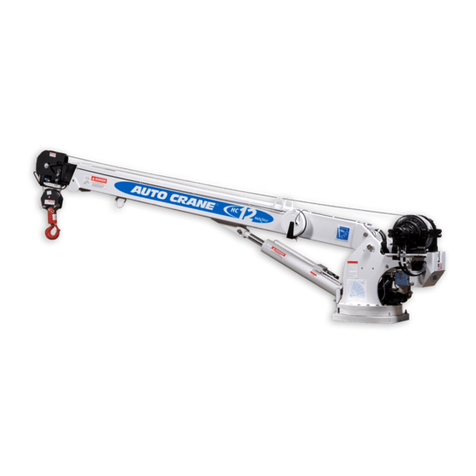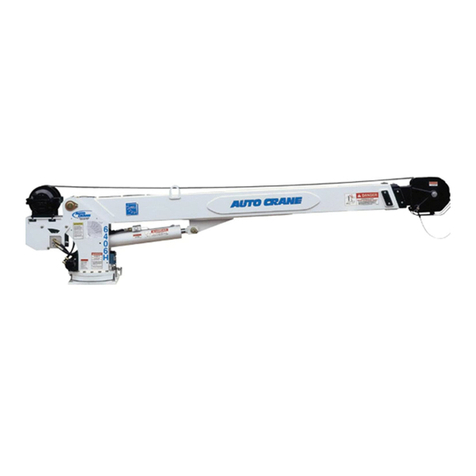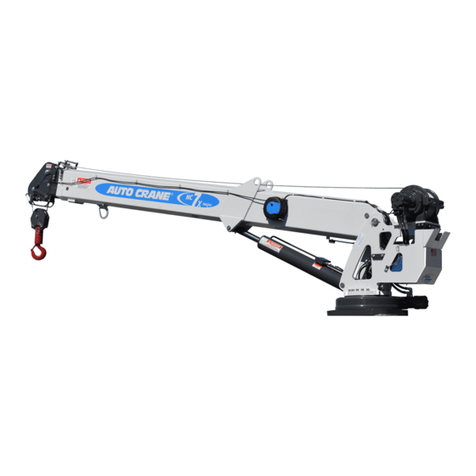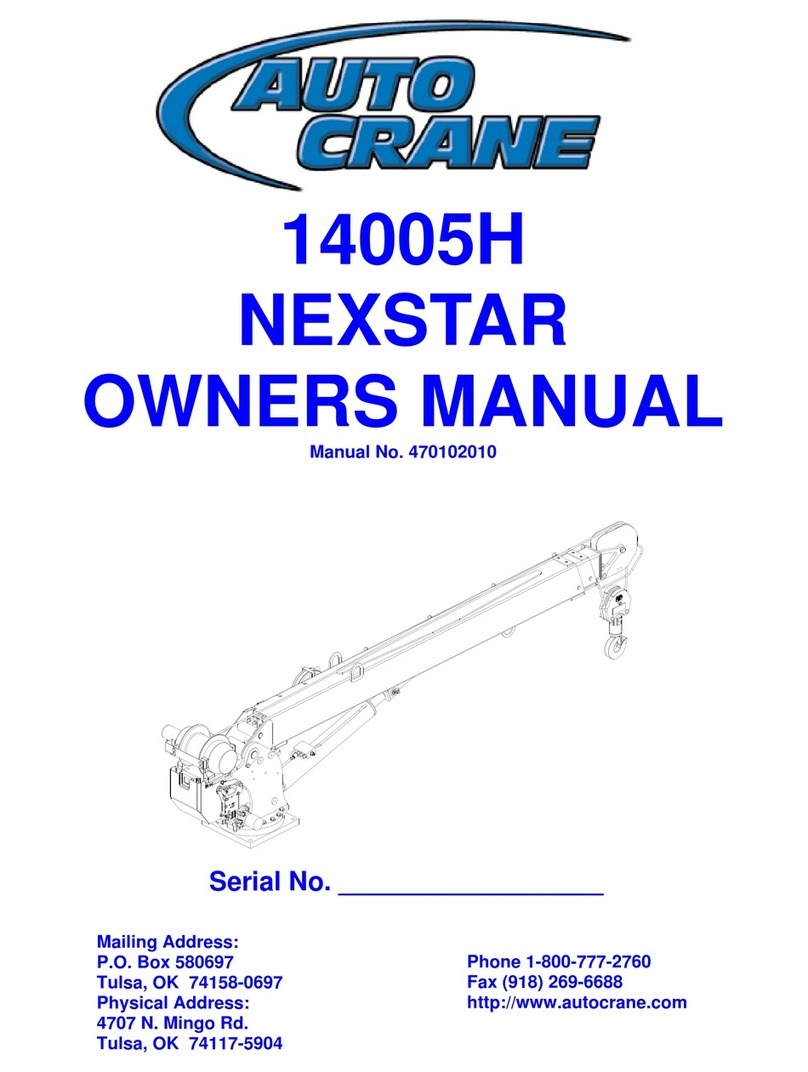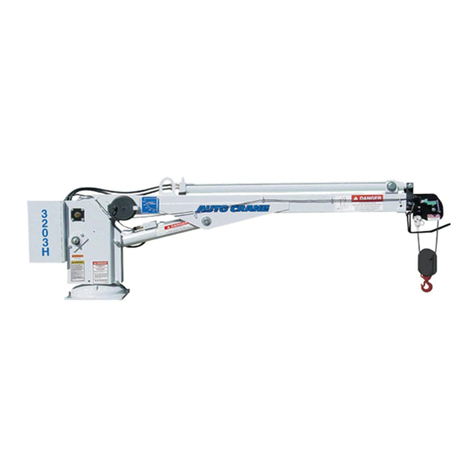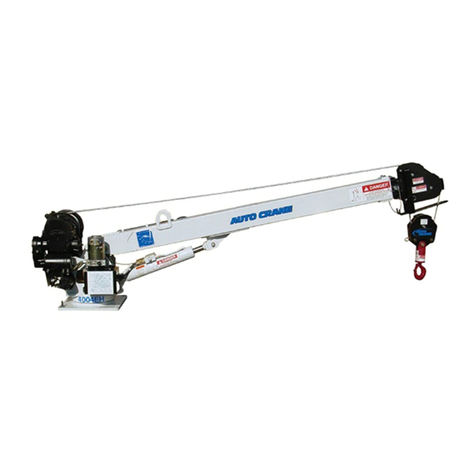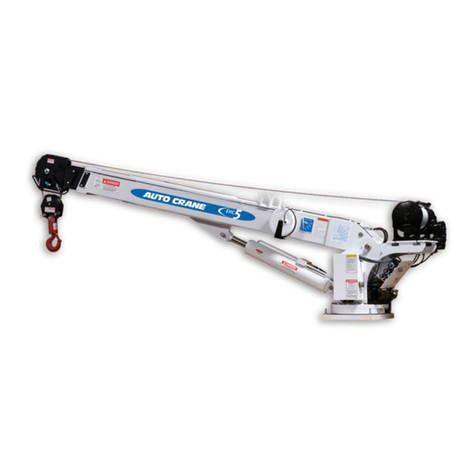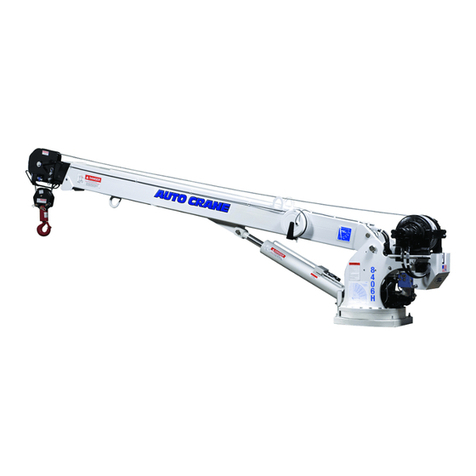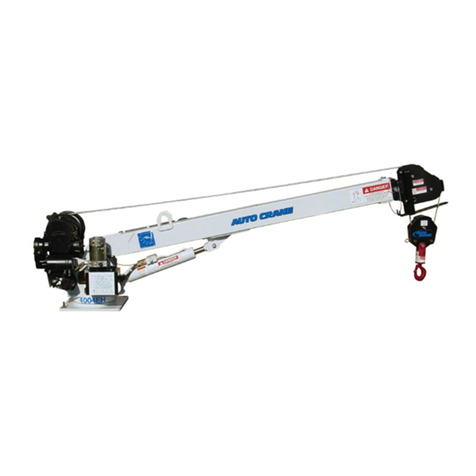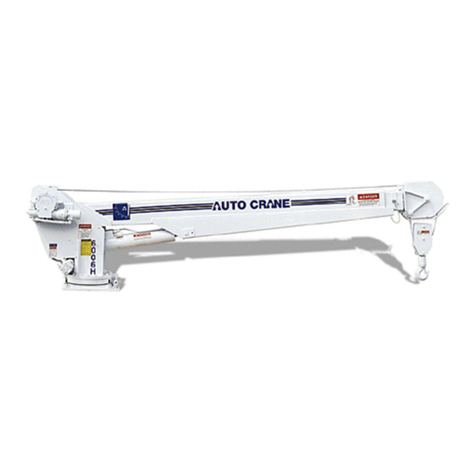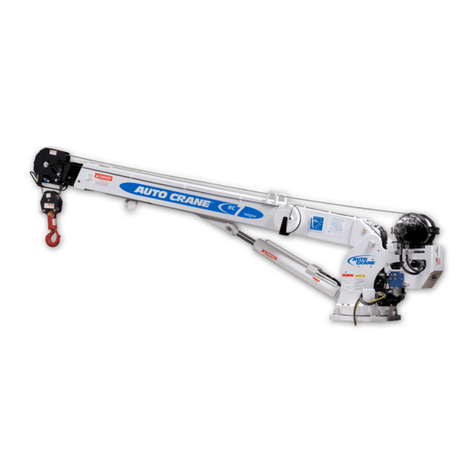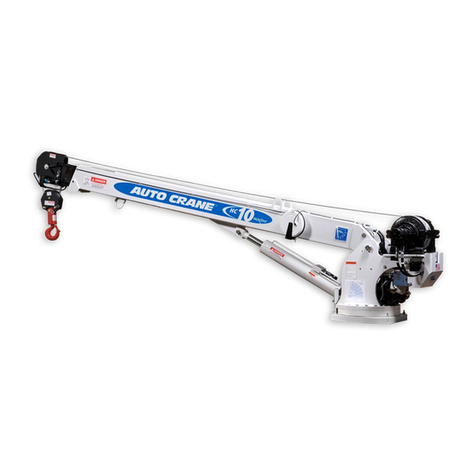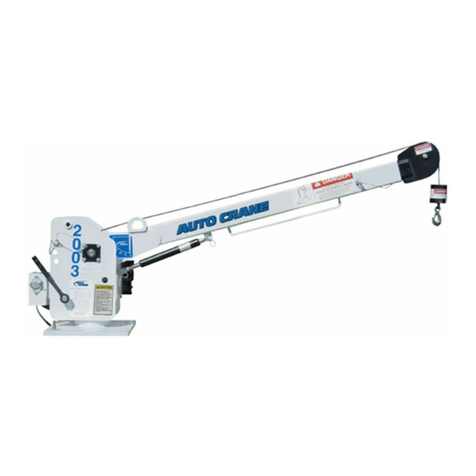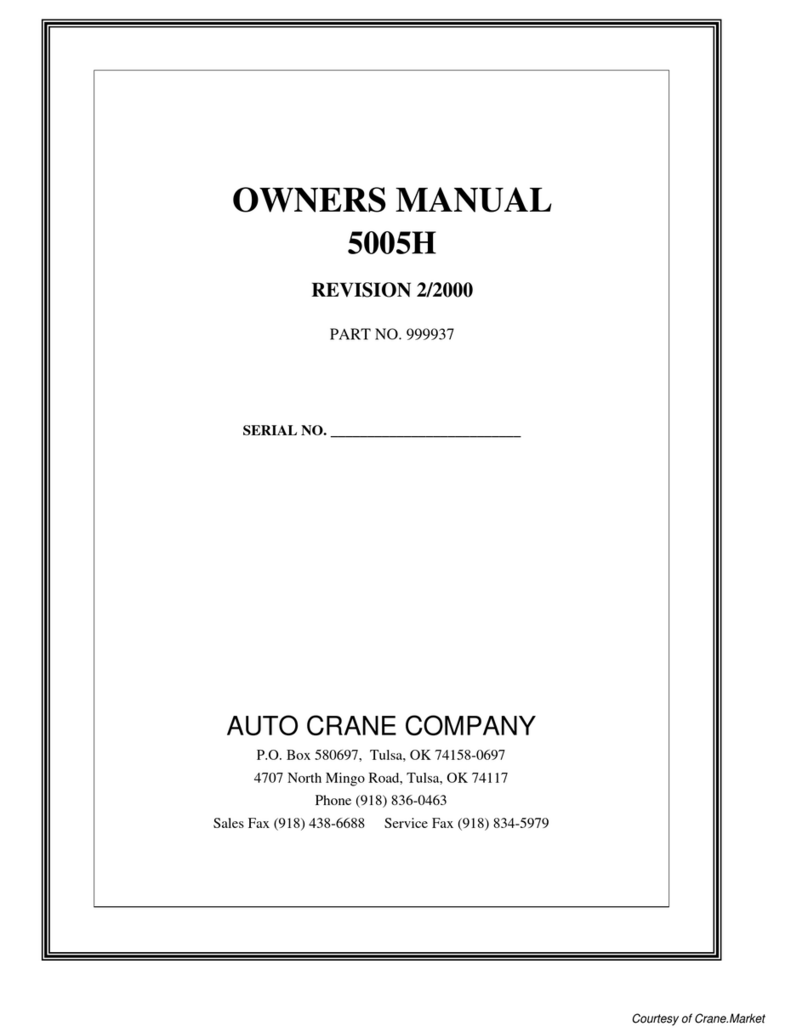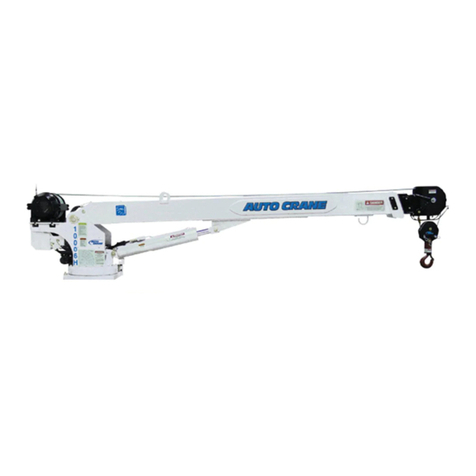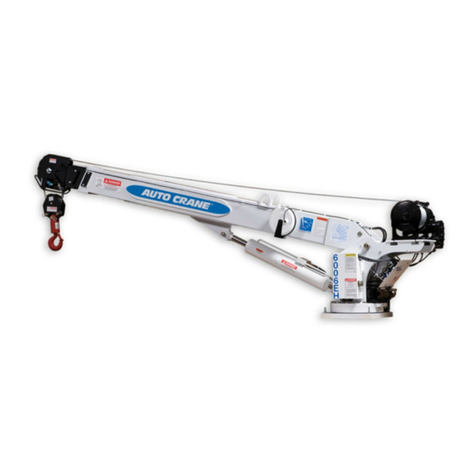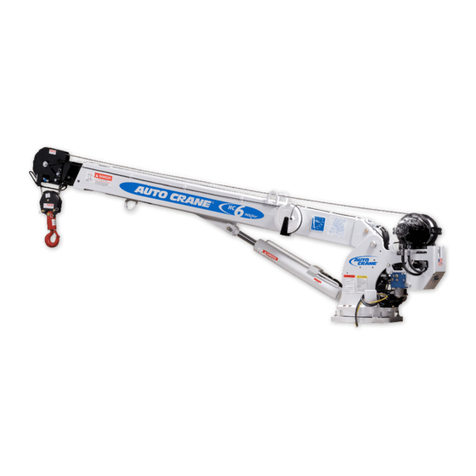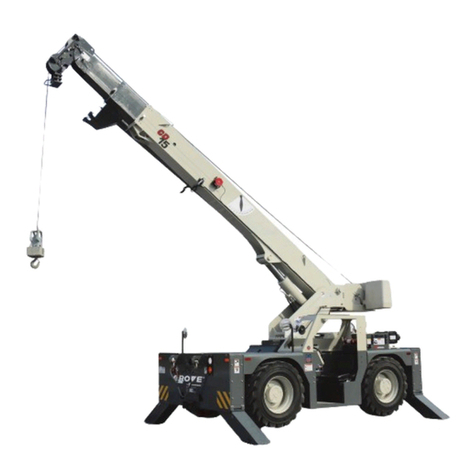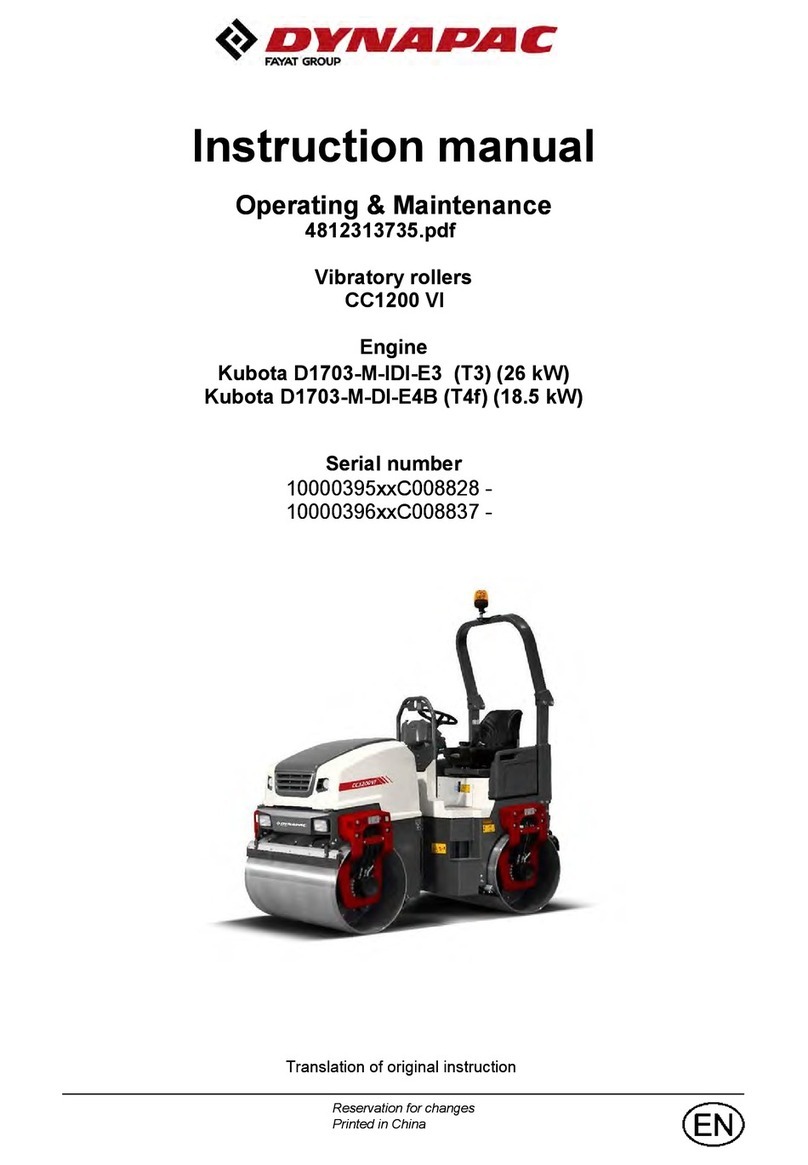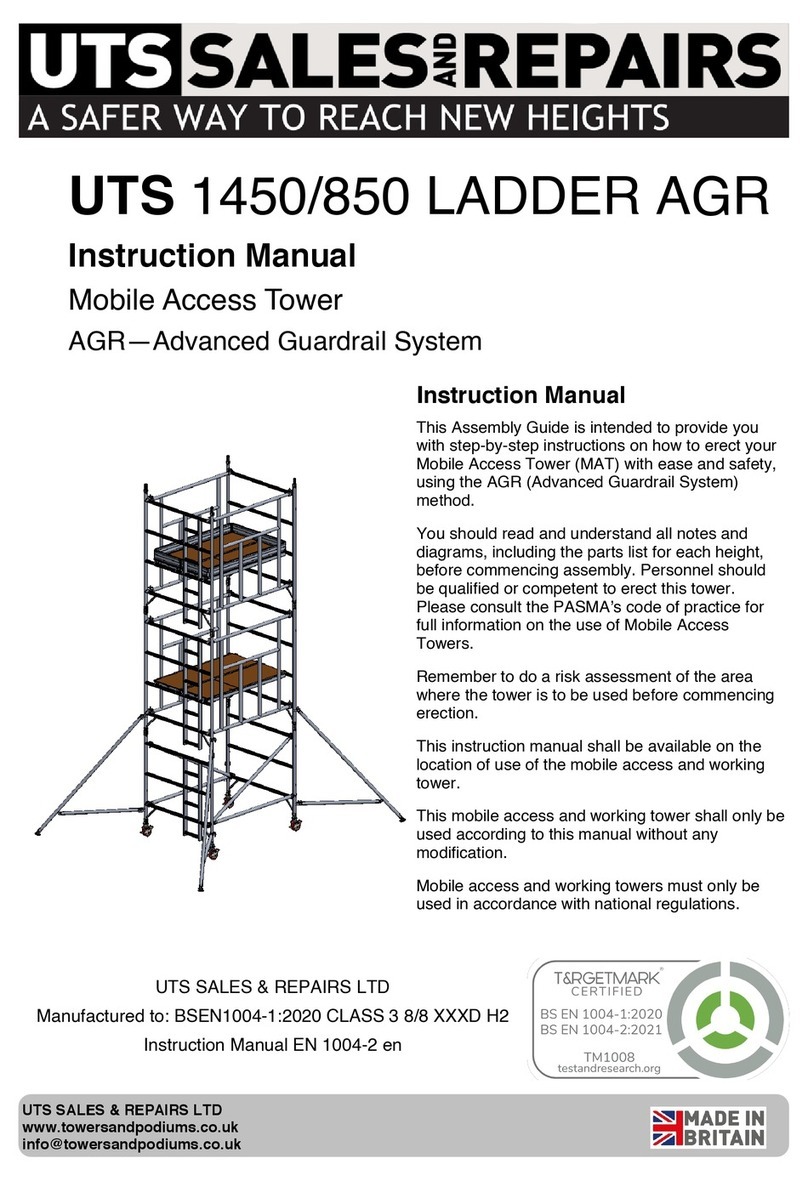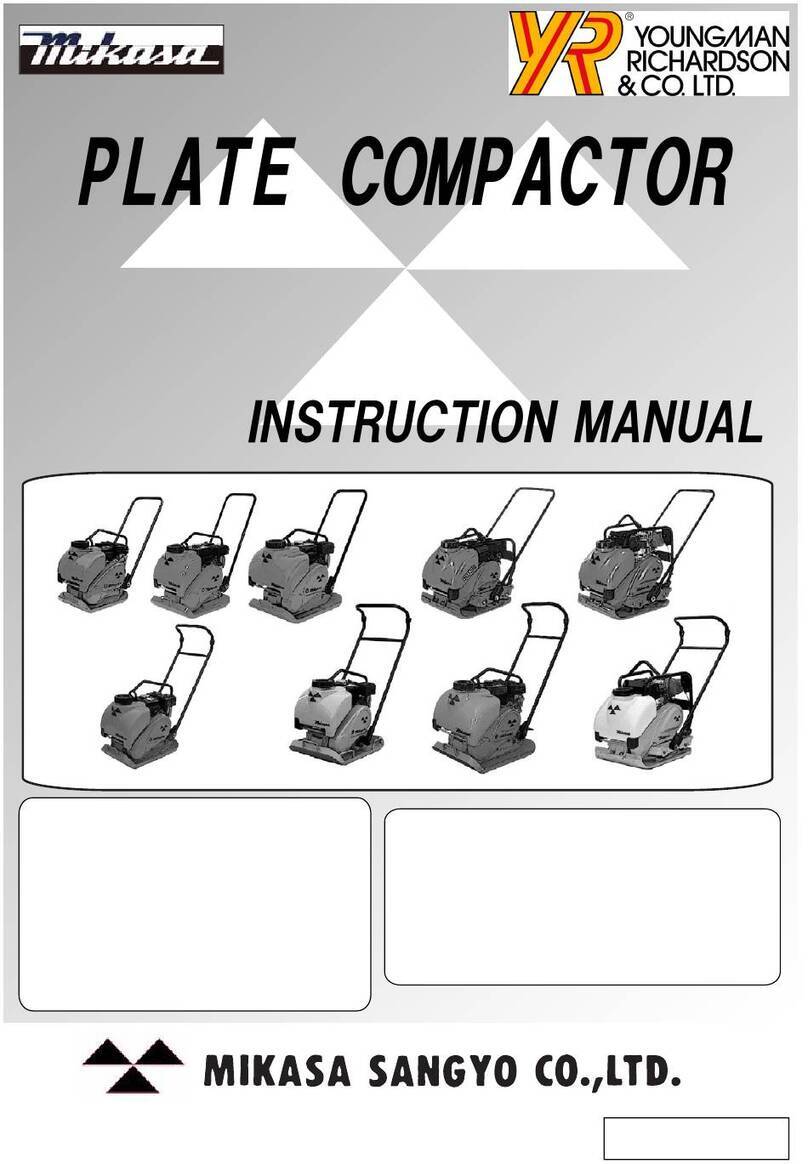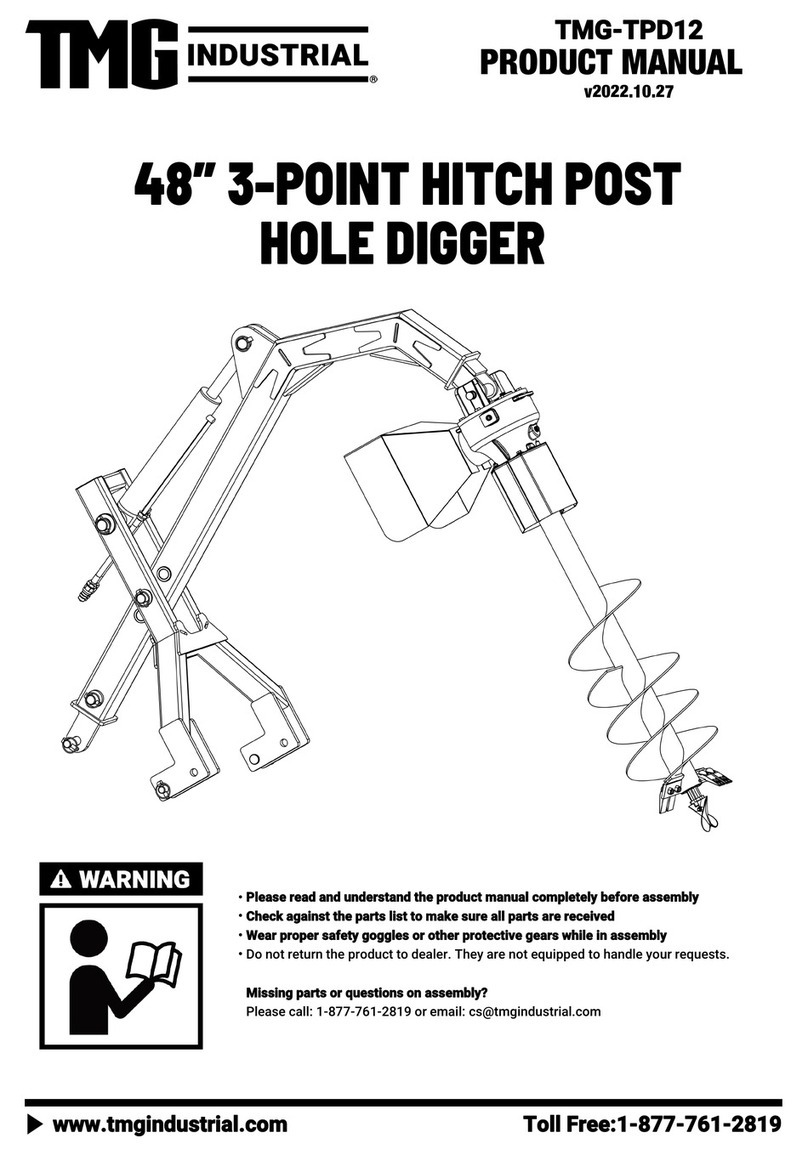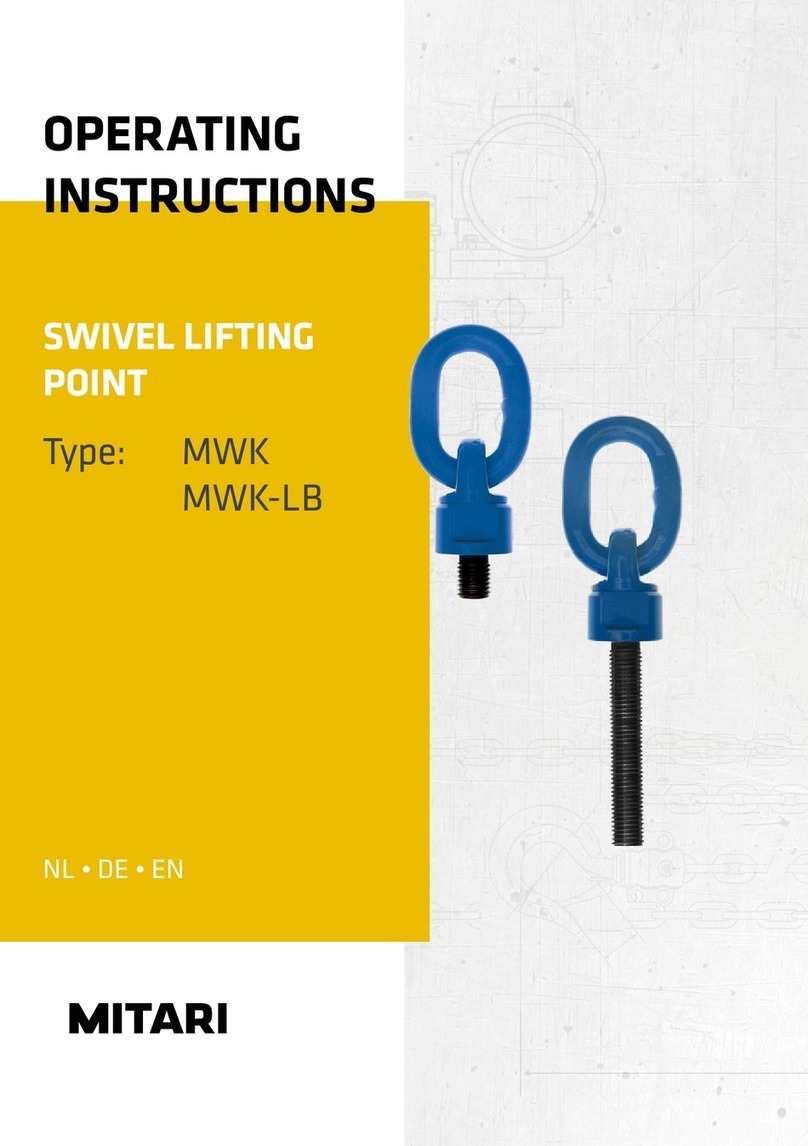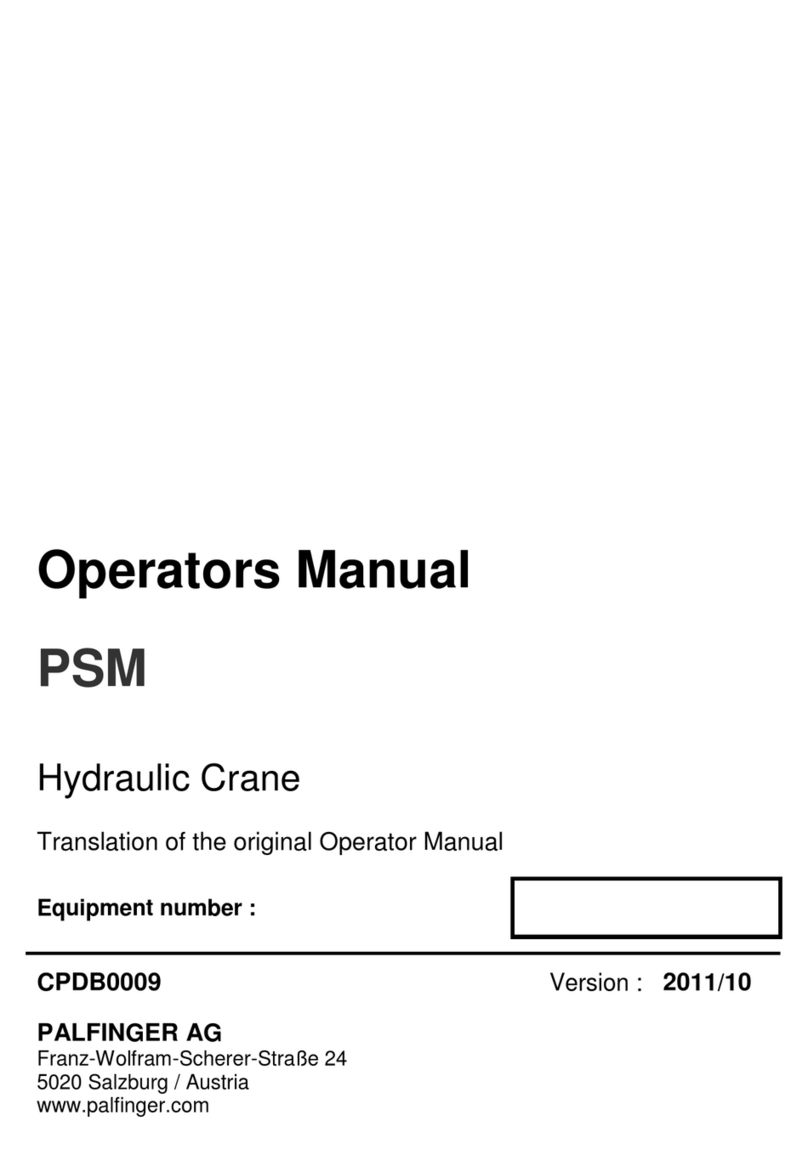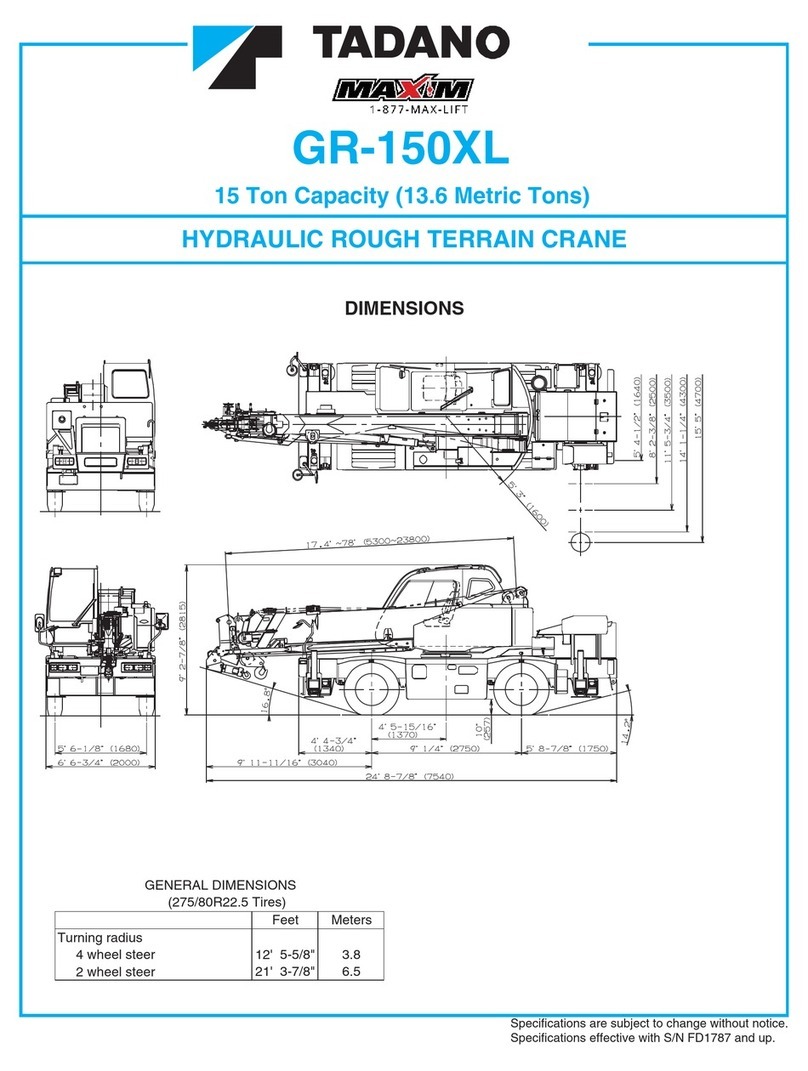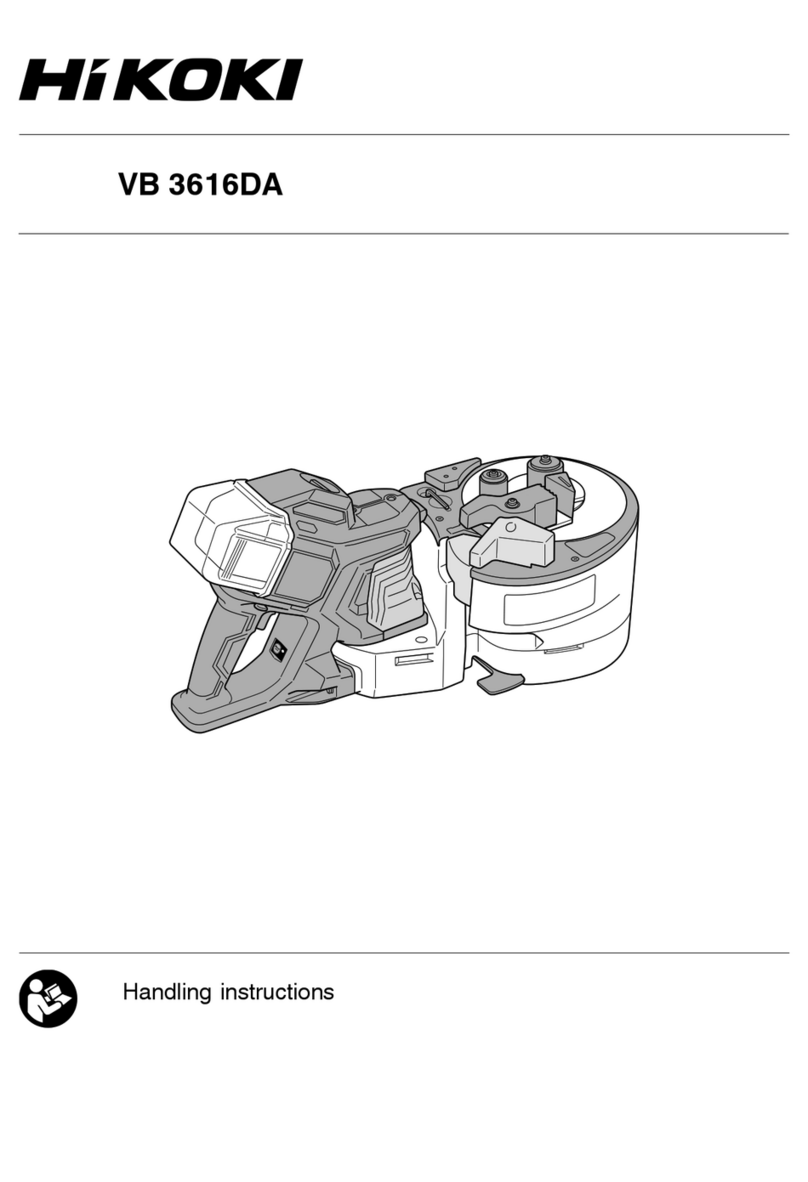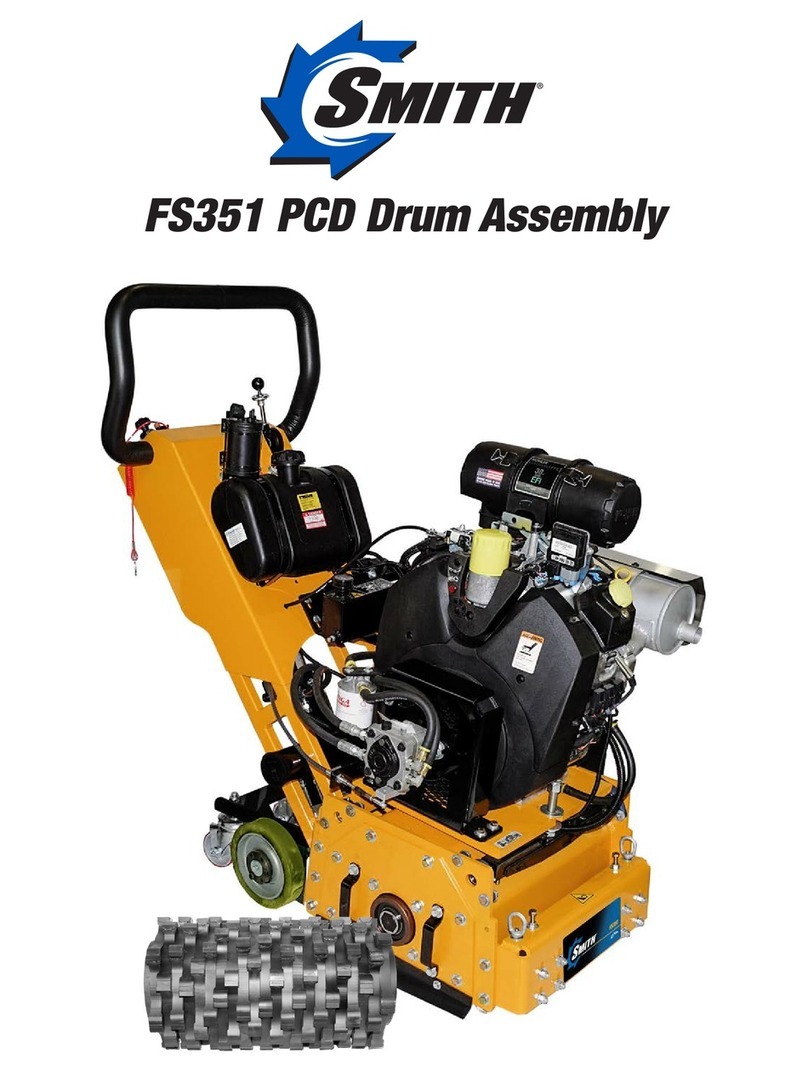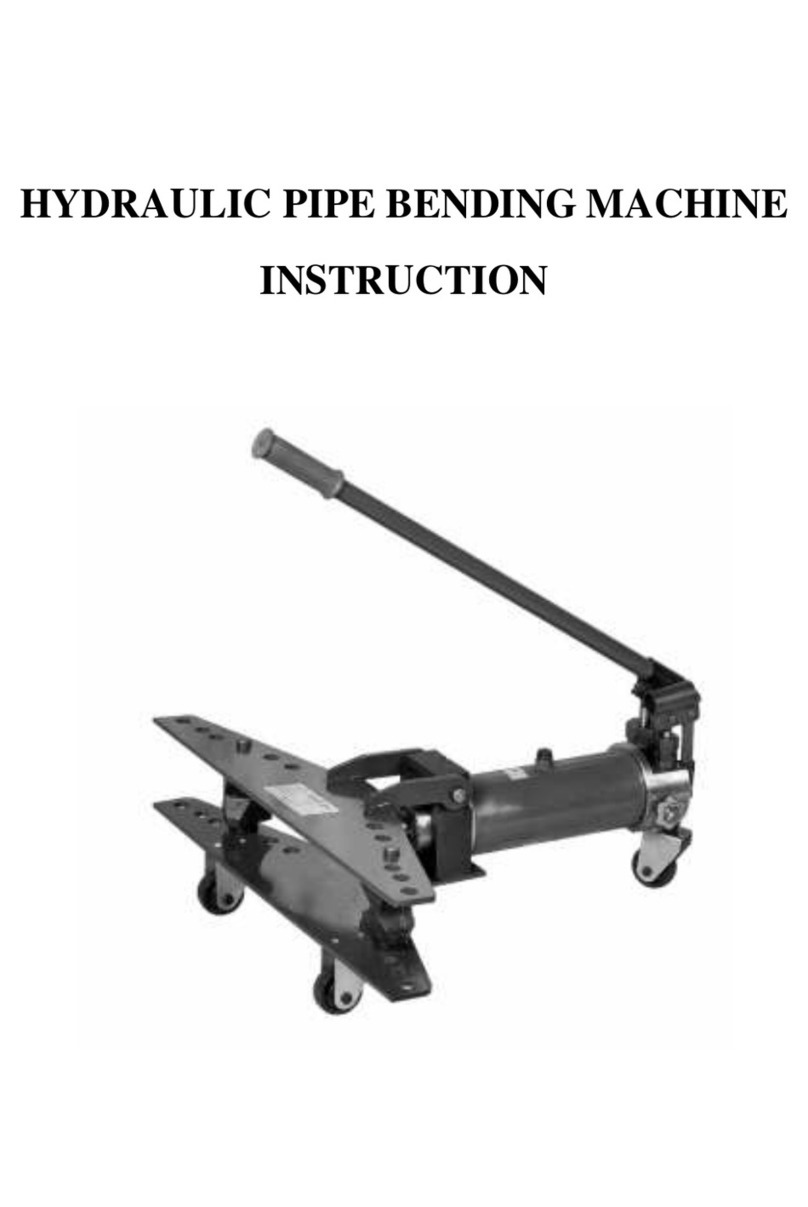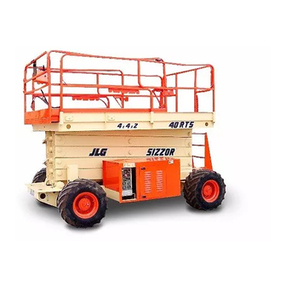
4
1. No unqualified or unauthorized person shall be
allowed to operate the crane.
2. WARNING: Never weld, modify, or use
unauthorized components / parts on any Auto
Crane unit. This will void any warranty or
liability. Also, failure of the crane may result.
3. Make certain the vehicle meets minimum chassis
requirements. (These requirements do not
guarantee unit stability.)
4. Make certain the crane is installed per factory
specifications. Contact your local distributor or the
Auto Crane factory if any questions arise.
5. Visual inspections and tests should be conducted at
the beginning of each shift each day to insure that
the crane and all its operating systems are in good
condition and working order before it is used.
6. Inspect hydraulic hoses frequently for signs of
deterioration, and replace them as required.
7. If a hydraulic break occurs, leave the area of the
break and do not attempt to stop the break by hand
as the hydraulic oil may be hot and under high
pressure which can cause serious injury. Shut the
system down as soon as possible.
8. Check the hook at least every thirty days for
distortions or cracks and replace it as required.
9. Oil gears as required.
10. Stop all operations when cleaning, adjusting or
lubricating the machine.
11. Keep dirt and grit out of moving parts by keeping
crane clean. Make sure machine is free of excess oil,
grease, mud and rubbish, thus reducing accidents
and fire hazards.
12. When a new cable is installed, operate first with a
light load to let the cable adjust itself.
13. Locate the vehicle at the work site for the best
stability possible.
14. Keep the vehicle in a level position while loading or
unloading.
15. Observe operating area for obstructions and/or
power lines that might be a hazard.
16. WARNING: NEVER OPERATE THE CRANE
NEAR ELECTRICAL POWER LINES. Auto
Crane Company recommends that the crane
never be any closer to a power line (including
telephone lines) than 10 feet at any point.
17. Allow the vehicle engine to warm up before
operating crane.
18. Know the weight of your rigging and load to
avoid overloading the crane.
19. Deduct the weight of the load handling equipment
from the load rating to determine how much weight
can be lifted.
20. All load ratings are based on crane capacity, NOT
the vehicle stability. Remember in lifting a heavy
load, the weight can create enough tipping moment
to overturn the vehicle
21. Always comply with load chart capacities,
(centerline of rotation to hook).
22. Secure all loads before lifting.
23. Always set the emergency brake before
beginning operation.
24. Keep objects and personnel clear of crane path
during operation.
25. Operate control levers slowly and smoothly in
order to meter oil flow for safe operation. (Not
applicable to electric-hydraulic cranes.)
26. Always extend the outriggers from vehicle to the
ground before crane operation. Insure that they are
firmly positioned on solid footings. Stand
clear of outriggers while they are being extended.
27. If any outrigger, when extended, rests on a curb or
other object that prevents it from extending to its
maximum distance, shorten bearing or
fulcrum point and reduce the maximum load
accordingly.
28. When an outrigger will not reach the ground due to
holes or grades, it shall be blocked up to provide
level and firm support for the truck.
29. When working in soft earth, use wide pads
under outrigger feet to prevent sinking.
30. Always store outriggers before transportation.
WARNING!
Auto Crane Company cranes are not designed or intended for use in lifting or moving persons. Any such
use shall be considered to be improper and the seller shall not be responsible for any claims arising there
from. This sale is made with the express understanding that there is no warranty that the goods shall be
fit for the purpose of lifting or moving persons or other improper use and there is no implied warranty or
responsibility for such purposes.
SAFETY TIPS AND PRECAUTIONS
--- IMPORTANT ---




















